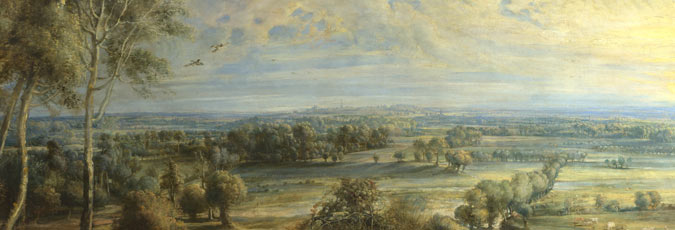Ashok Roy, Director of Science. Published on 15 December 2011 in conjunction with the Carbon Management Plan.
Introduction
The National Gallery’s primary purpose is to show the nation’s paintings to the public. The Gallery is also responsible for ensuring the long-term preservation of the collection, as laid out in the objectives of its constitution. The pictures are of such cultural importance and value, that no responsible policy of preservation should make allowance for damage to occur from any source.
One of the most important ways in which paintings are preserved arises from the application of a set of principles known collectively as ‘preventive conservation’. This entails controlling the factors that may damage paintings so as to prevent damage from occurring, or to reduce it to the minimum level that it is feasible to achieve and is compatible with public access. Conservation, in this context, means the same as preservation. See the National Gallery's Preventive Conservation Risk Management Statement for an outline of the Gallery's preventive conservation policies.
It is an unfortunate physical reality of the material nature of paintings that these objects are vulnerable to change and damage as a consequence of exposure to a variety of damaging causes. Most of these factors, under usual circumstances of display, can be described as ‘environmental’ in origin. It must be remembered, of course, that there are many other risks that works of art face over their long histories – accidental and deliberate physical damage, loss from fire and flood, theft and so on – and the custodians of works of art in museums and other collections quite understandably take elaborate precautions also to reduce these risks to a minimum. These latter factors are more usually grouped under the heading ‘security’ rather than ‘preventive conservation’. It is very likely that historically more works of art have been lost through dramatic single events such as fire and flood than any other cause.
Next: Environmental risks
Image above: Detail from Rubens, A View of Het Steen in the Early Morning, probably 1636. This painting is one of the most environmentally-sensitive panel paintings in the National Gallery Collection

